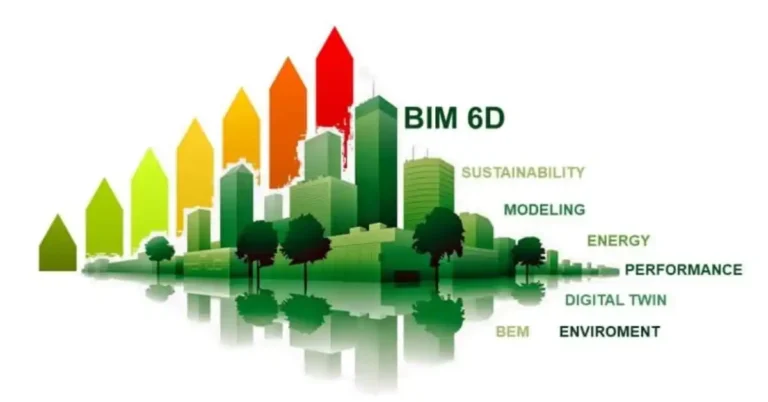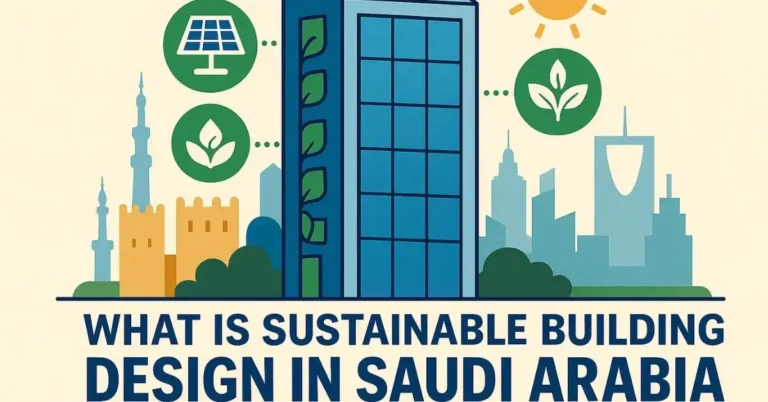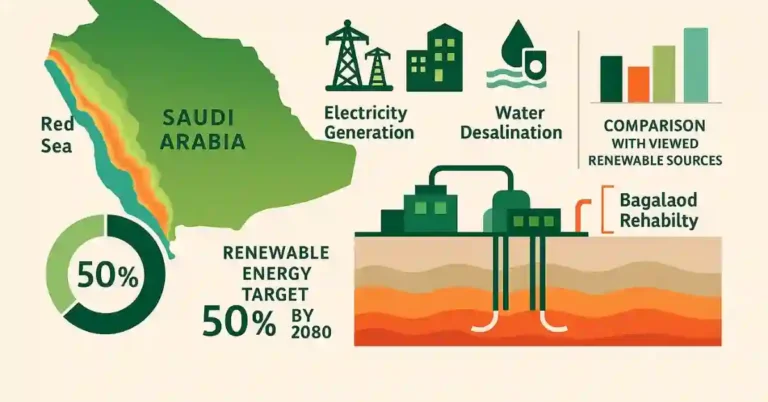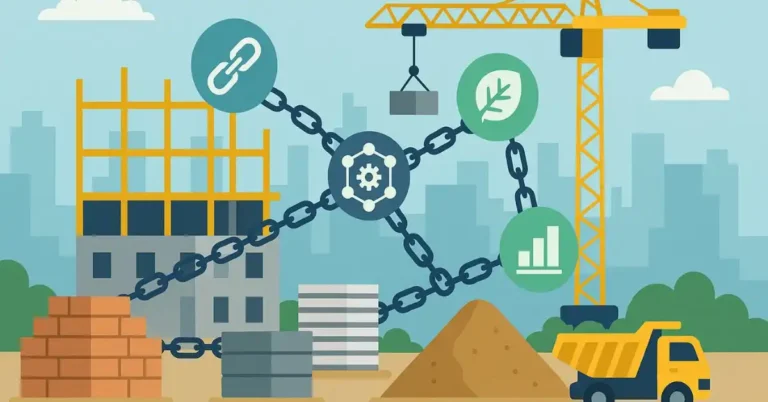Low-Carbon Mobility in Saudi Arabia: Sustainable Mobility for Smart Cities
Saudi Arabia’s rapid development and urbanization have brought along various challenges, including an increase in carbon emissions and traffic congestion. As the country continues to grow, it is crucial to incorporate sustainable practices in all aspects of development, including transportation infrastructure.
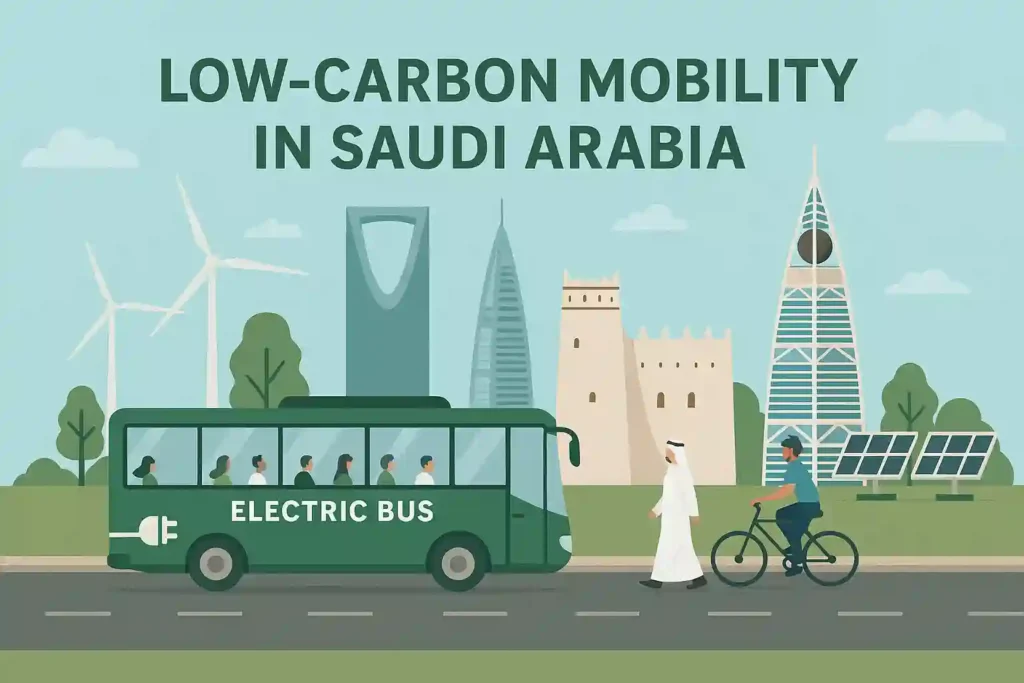
Low-carbon mobility is a critical component in building a green and resilient society. It encompasses the planning and development of transportation systems that not only serve current population needs but also minimize environmental impact and enhance long-term sustainability.
In Saudi Arabia, where rapid urbanization and population growth are reshaping major cities, the shift toward sustainable transportation infrastructure is essential. By embracing low-carbon mobility strategies, the Kingdom can effectively reduce emissions, improve air quality, and foster stronger connections between green buildings and sustainable communities.
This article explores the concept of low-carbon mobility, its benefits, and its pivotal role in Saudi Arabia’s sustainable urban transformation.
The Benefits of Low-Carbon Mobility Sustainable Transportation Infrastructure
There are various benefits that come with incorporating sustainable transportation infrastructure in any city, including:
1. Reducing Carbon Emissions

Sustainable transportation infrastructure is designed to promote the use of cleaner and more energy-efficient modes of transportation like electric cars, bicycles, and public transport. By reducing the reliance on fossil-fueled vehicles, it can significantly decrease carbon emissions, contributing to the fight against climate change.
2. Enhancing Air Quality
With the reduction in carbon emissions, sustainable transportation infrastructure can also improve air quality. In Saudi Arabia, where air pollution is a growing concern, the implementation of eco-friendly transportation systems would undoubtedly have a positive impact on public health.
3. Minimizing Traffic Congestion
Sustainable transportation infrastructure prioritizes the use of public transport and encourages the development of pedestrian and bicycle-friendly environments. This, in turn, reduces the number of vehicles on the road, easing traffic congestion and improving the overall flow of traffic.
4. Promoting Physical Activity and Health

Green buildings and communities often include facilities such as bike lanes and dedicated pedestrian paths, encouraging residents to be more physically active. This not only benefits the individual’s health but also promotes a more sustainable and healthier lifestyle.
5. Boosting Economic Growth
Sustainable transportation infrastructure can also have a positive impact on a country’s economy. By reducing traffic congestion and improving air quality, it can attract investment and businesses to the area. This, in turn, can lead to job creation and economic growth.
Connecting Green Buildings and Communities in KSA Through Low-Carbon Mobility
In the Kingdom of Saudi Arabia, the convergence of low-carbon mobility and green building initiatives presents a transformative opportunity to reshape urban living. Sustainable transportation infrastructure not only mitigates environmental impacts but also serves as a vital link between eco-friendly developments and the communities they serve.
Improving Accessibility and Inclusivity
A resilient and well-planned transportation network ensures that green buildings are not only sustainable but also accessible to everyone, including individuals with disabilities, the elderly, and families with limited mobility. Features like barrier-free transit stations, safe sidewalks, and dedicated bicycle lanes enhance inclusive mobility, allowing all citizens to benefit from sustainable living environments.
Strengthening Community and Social Interaction
Sustainable transportation fosters more than just environmental gains. By encouraging the use of shared public spaces, such as green corridors, community parks, and pedestrian-friendly zones, it strengthens social cohesion. Walkable neighborhoods invite more daily interactions, supporting mental well-being and creating a sense of belonging among residents.
Reducing Economic Strain
In a country where private vehicle ownership can be costly due to fuel, maintenance, and insurance, affordable public transit becomes essential.
Low-carbon mobility options such as bus rapid transit (BRT), electric ride-sharing, and micro-mobility (e-scooters, bikes) reduce household expenses while aligning with national goals for sustainable growth and reduced emissions.

Supporting National Sustainability Goals
The integration of low-carbon mobility in Saudi Arabia directly supports Vision 2030 and the Kingdom’s broader net-zero ambitions. Projects such as NEOM, the Riyadh Metro, and The Line are already setting examples of how sustainable urban planning, green architecture, and transportation can be seamlessly aligned to build smarter, greener cities.
Conclusion
Sustainable transportation infrastructure plays a critical role in connecting green buildings and communities in Saudi Arabia. It offers numerous benefits, from reducing carbon emissions to promoting a sense of community and economic growth. As the country continues to develop and urbanize, it is crucial to prioritize sustainable transportation infrastructure to create a more environmentally friendly and resilient society.
FAQs
1. What is sustainable transportation infrastructure?
Sustainable transportation infrastructure includes systems and technologies designed to reduce environmental impact. It supports public transit, low-carbon vehicles, and pedestrian- and cyclist-friendly design.
2. What are some key examples of sustainable transportation projects in Saudi Arabia?
Notable projects include the Riyadh Metro, the King Abdullah Financial District transit network, the North-South Railway, and King Abdullah Port—all aimed at reducing emissions and improving connectivity.
3. How does sustainable transportation align with Saudi Arabia’s Vision 2030?
It directly supports Vision 2030 goals by reducing the Kingdom’s carbon footprint, enhancing urban livability, and fostering economic diversification through green infrastructure.
4. How does sustainable transport help improve air quality?
By promoting electric mobility, reducing private car use, and cutting greenhouse gas emissions, these systems lead to lower air pollution and healthier urban environments.
5. What role does public transport play in sustainability?
Public transit systems like buses, trains, and metros significantly cut per capita emissions and energy use while easing traffic congestion.
6. What are the biggest challenges to adopting sustainable transport in Saudi Arabia?
Key obstacles include high initial costs, limited public awareness, reliance on car culture, and lack of widespread infrastructure for electric mobility.
7. What is low-carbon mobility and how is it applied in KSA?
Low-carbon mobility refers to transport solutions that emit little to no greenhouse gases. In KSA, this includes investments in EV infrastructure, high-efficiency mass transit, and walkable urban planning.
8. How can smart city planning support sustainable transport?
Smart cities integrate transit-oriented development, data-driven traffic management, and renewable energy systems to enhance sustainable mobility.
9. What can individuals do to support low-carbon transportation in Saudi Arabia?
People can use public transport, adopt EVs or hybrids, walk or bike when possible, and advocate for sustainable urban policies in their local communities.
10. Are there government incentives in Saudi Arabia for sustainable transportation?
While still emerging, initiatives such as Vision 2030 and investments in electric vehicle infrastructure show growing support. Future policies may include EV subsidies, transit development, and emissions regulations.
